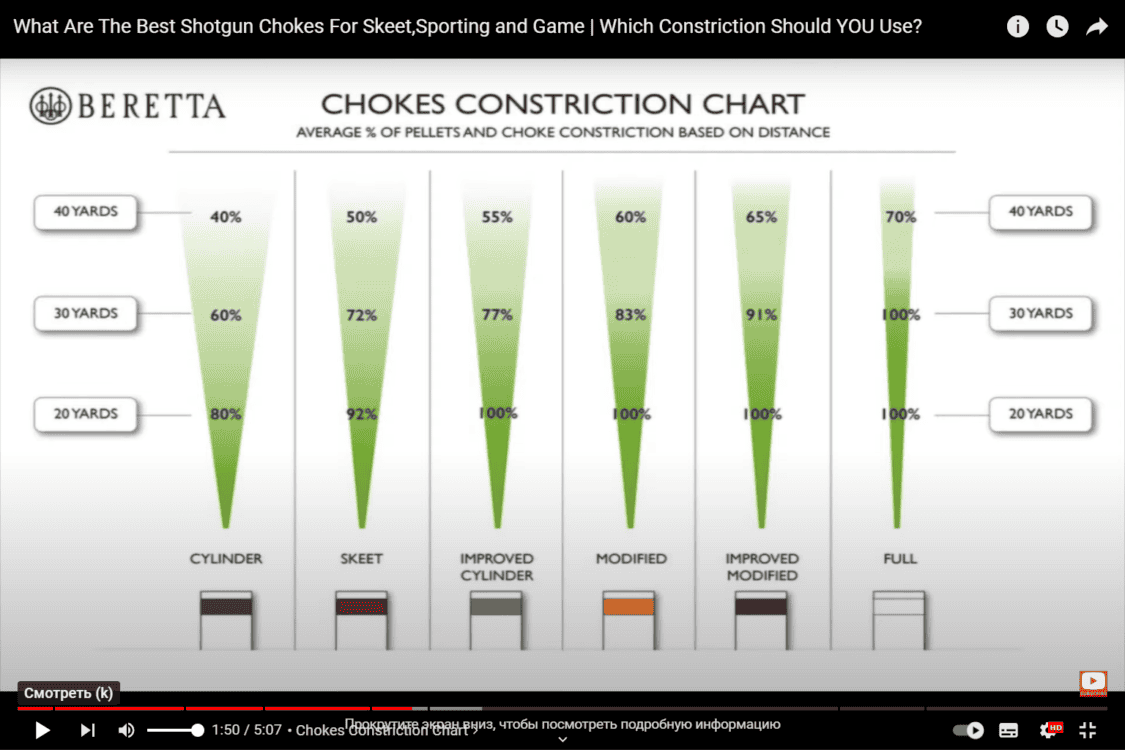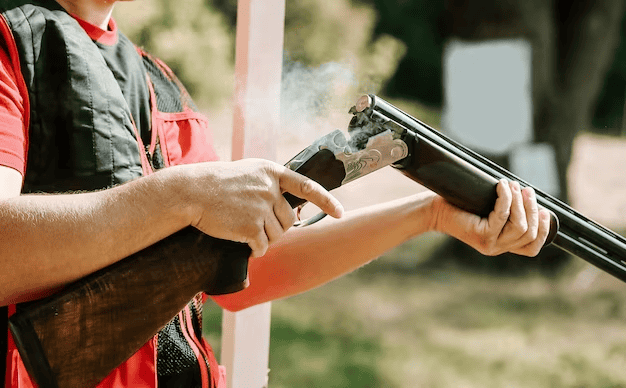Welcome to the ultimate guide to finding the best choke for sporting clays! If you’re a passionate clay shooter, you know that the right choke can make all the difference in your performance. Whether you’re a seasoned pro or just starting with sporting clays, understanding how chokes work and choosing the right one for your needs is crucial.
Understanding Sporting Clays and the Role of Chokes
Before we dive into the best choke options, let’s briefly understand what sporting clays is and the crucial role chokes play in this discipline. Sporting clays is an exciting form of shotgun shooting, involving multiple stations with diverse target presentations to mimic real hunting scenarios.
The Different Choke Types Explained
Cylinder Choke (C): The Cylinder choke provides an open shot pattern with little constriction. It is ideal for close-range targets and is commonly used in the first barrel for quick shots.
Improved Cylinder Choke (IC): The Improved Cylinder choke offers slightly more constriction than the Cylinder, making it suitable for medium-range targets. It provides a good balance between spread and range.
Modified Choke (M): The Modified choke delivers a tighter pattern and is effective for medium to longer-range targets. It is versatile and a popular choice for sporting clays.
Improved Modified Choke (IM): The Improved Modified choke offers more constriction than the Modified choke, making it suitable for longer distances.
Full Choke (F): The Full choke delivers a dense shot pattern, making it ideal for long-range targets. It is commonly used in the second barrel for distant shots.
Extra Full Choke (EF): The Extra Full choke has even more constriction than the Full choke and is suitable for specialized shooting situations, like handicap trap and long-range clays.
Factors to Consider When Choosing a Choke
Selecting the best choke for sporting clays requires careful consideration of several factors:
Target Distance and Presentation
Different stations in sporting clays offer various target distances and presentations. Analyze the course layout and identify the most common shooting scenarios you’ll encounter. This will help you determine the appropriate choke for each station.
Pellet Size and Load
The size and type of shot pellets, as well as the load you’re using, can influence choke performance. Experiment with different pellet sizes and loads to find the best combination for consistent results.
Personal Shooting Style
Every shooter has a unique shooting style, and certain chokes may complement your technique better than others. Consider your shooting strengths and weaknesses to make an informed choice.
Shooting Conditions
Weather conditions can affect choke performance. For windy days, a tighter choke may be advantageous, while an open choke might be preferred in calm conditions.
The Best Choke for Different Target Presentations
Incoming Targets
- Ideal Choke: Improved Cylinder (IC);
- Description: Station 1 often presents incoming targets with relatively close distances. The open pattern of the Improved Cylinder choke allows for quick target acquisition.
Crossing Targets
- Ideal Choke: Modified (M);
- Description: Crossing targets require good pattern coverage. The Modified choke strikes a balance between spread and density, making it suitable for this station.
Quartering Targets
- Ideal Choke: Improved Modified (IM);
- Description: Quartering targets demand a slightly tighter pattern to ensure pellet concentration. The Improved Modified choke provides the necessary constriction.

Choke Selection for Different Skill Levels
Beginners and Novices
- Recommended Choke: Improved Cylinder (IC) or Modified (M);
- Description: Beginners benefit from wider shot patterns that provide a forgiving margin for error. The IC and M chokes are excellent choices to start with.
Intermediate Shooters
- Recommended Choke: Modified (M) or Improved Modified (IM);
- Description: Intermediate shooters can experiment with slightly tighter chokes to refine their accuracy without sacrificing pattern coverage.
Advanced and Competitive Shooters
- Recommended Choke: Modified (M), Improved Modified (IM), or Full (F);
- Description: Advanced shooters often switch between chokes based on specific targets and shooting conditions to optimize their performance.
In-Depth Choke
| Choke Type | Pattern | Ideal Distance | Best for Targets |
|---|---|---|---|
| Cylinder (C) | Open | Close | Station 1 – Incoming Targets |
| Imp. Cylinder | Slightly Open | Short to Medium | Beginners, Close-range Targets |
| Modified (M) | Moderate | Medium | Station 5 – Crossing Targets |
| Imp. Modified | Moderately Tight | Medium to Long | Station 10 – Quartering Targets |
| Full (F) | Tight | Long | Distant Targets, Competitive Shooters |
| Extra Full (EF) | Very Tight | Specialized Situations | Handicap Trap, Long-range Clays |
How to Install and Maintain Chokes
Installing and maintaining chokes is essential for consistent performance and longevity. Follow these steps:
- Installation:
- Ensure your shotgun is unloaded before attaching or removing chokes;
- Use the correct choke wrench provided with your shotgun to avoid damage;
- Hand-tighten the choke until snug, and then use the wrench for a slight additional turn.
- Maintenance:
- After shooting, remove and clean chokes regularly to prevent buildup of residue;
- Use a bore brush and cleaning solvent to keep chokes in top condition.
Extended Chokes vs. Standard Chokes
When selecting a choke for sporting clays, you’ll come across both extended and standard choke options. Let’s explore the differences and advantages of each:
Extended Chokes
- Longer Length: Extended chokes protrude beyond the end of the shotgun barrel, providing a longer constriction area. This can result in improved shot pattern consistency;
- Easier Identification: Extended chokes often have engraved markings indicating their constriction, making it easy to identify the choke you’re using;
- Better Heat Dissipation: The extended design allows for better heat dissipation during rapid shooting, reducing the risk of choke distortion.
Standard Chokes
- Flush Fit: Standard chokes sit flush with the barrel, giving the shotgun a streamlined appearance. Some shooters prefer this sleek look;
- Lighter Weight: Since standard chokes do not extend beyond the barrel, they are generally lighter than extended chokes, which might be preferable for some shooters;
- Less Prone to Snagging: The flush fit of standard chokes reduces the risk of snagging on clothing or vegetation during handling.
Both extended and standard chokes have their merits, and the choice ultimately comes down to personal preference and shooting style.
Using Aftermarket Chokes for Customization
While many shotguns come with factory-installed chokes, aftermarket choke options provide shooters with additional customization possibilities. Here are some benefits of using aftermarket chokes:
Specialized Constriction: Aftermarket choke manufacturers offer a wide range of constriction options, allowing shooters to find the perfect fit for their individual needs.
Ported Chokes: Some aftermarket chokes feature porting, which are small holes or slots on the choke body. Porting can reduce muzzle jump and felt recoil, leading to faster target reacquisition.
Pattern Testing: Some choke manufacturers provide pattern testing services, helping shooters determine the best choke for their specific shotgun and ammunition combination.
Before purchasing aftermarket chokes, do thorough research, read reviews, and consider seeking recommendations from experienced shooters.
Selecting the Perfect Shotgun for Sporting Clays
Choosing the right shotgun is just as crucial as selecting the ideal choke for sporting clays. Consider the following factors to find the perfect match:
Gauge Selection
Sporting clays can be enjoyed with various shotgun gauges, but the most common ones are 12-gauge, 20-gauge, and 28-gauge. Each gauge has its pros and cons:
- 12-Gauge: The most popular and versatile gauge, offering a wide range of ammunition choices and lower felt recoil due to its larger size;
- 20-Gauge: A great option for shooters who prefer a lighter and more maneuverable shotgun, with slightly less recoil than the 12-gauge;
- 28-Gauge: Ideal for shooters who prioritize low recoil and nimble handling, though it requires precise shooting due to its smaller shot payload.

Shotgun Action
Shotguns come in various actions, including pump-action, semi-automatic, and over-and-under. Consider the following aspects of each action type:
- Pump-Action: Reliable and cost-effective, pump-action shotguns are suitable for shooters on a budget and those who prefer manual cycling of rounds;
- Semi-Automatic: These shotguns offer rapid follow-up shots and reduced recoil due to their gas or recoil-operated mechanisms;
- Over-and-Under: Preferred by many competitive shooters, over-and-under shotguns provide the option to have two different chokes for immediate use, offering versatility on the course.
Safety Precautions for Sporting Clays Shooting
While sporting clays is an enjoyable and safe sport, adhering to essential safety practices is paramount. Here are some crucial safety precautions to follow:
Always Keep the Gun Pointed in a Safe Direction
Never point your shotgun at anything other than the shooting direction. Keep the muzzle pointed towards the ground or the sky when not actively aiming at a target.
Keep Your Finger off the Trigger Until Ready to Shoot
Keep your finger off the trigger until you are prepared to take a shot. Maintain a proper shooting grip, with your finger outside the trigger guard until the moment of shooting.
Know and Understand the Range Safety Rules
Familiarize yourself with the specific safety rules of the sporting clays course you are shooting at. Observe and follow all range commands and instructions provided by the range safety officers.
Use Ear and Eye Protection
Protect your hearing and vision by wearing appropriate ear and eye protection while shooting. This will shield you from potential harm caused by loud gunshots or flying debris.
Never Load Until Ready to Shoot
Load your shotgun only when you are on the designated shooting station and ready to take your turn. Unload your shotgun immediately after you complete your round.
Be Mindful of Your Surroundings
Always be aware of your surroundings and other shooters on the course. Maintain a safe distance from others and avoid stepping forward of the shooting line.
Conclusion
Investing in the best choke for sporting clays can significantly enhance your shooting experience and performance. Consider your shooting style, target presentations, and skill level to make an informed choice. Remember to experiment with different chokes and loads to find the perfect combination that suits your needs. With the right choke, you’ll be hitting more clays and enjoying this exhilarating sport even more!
